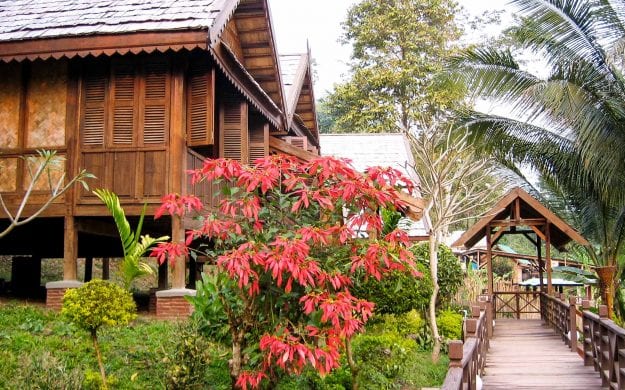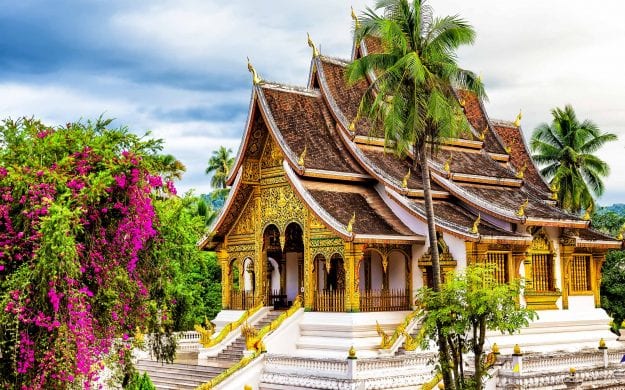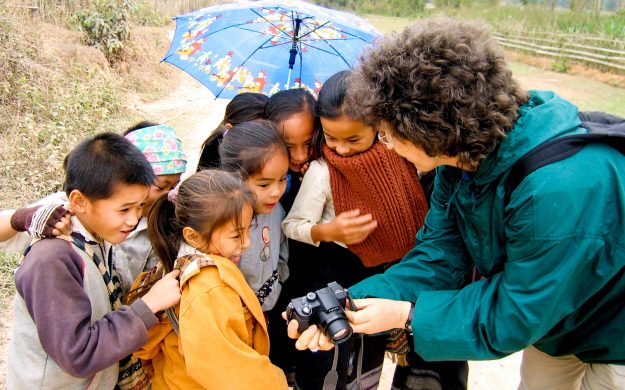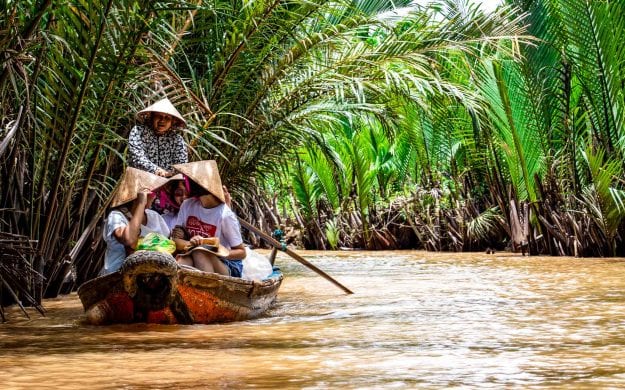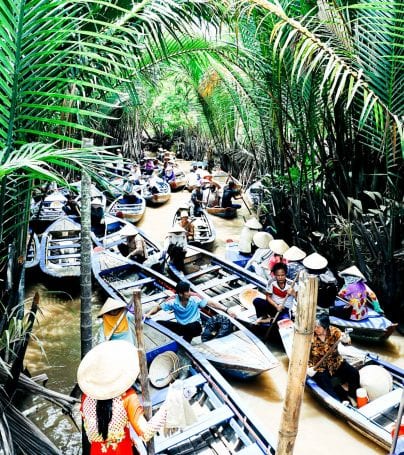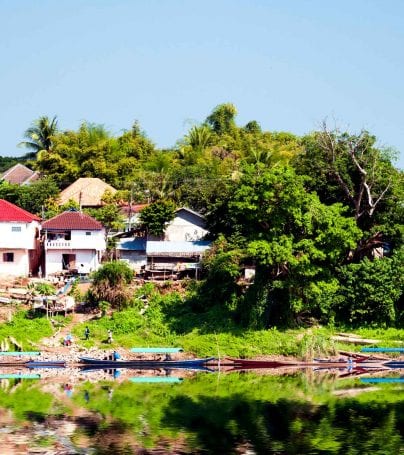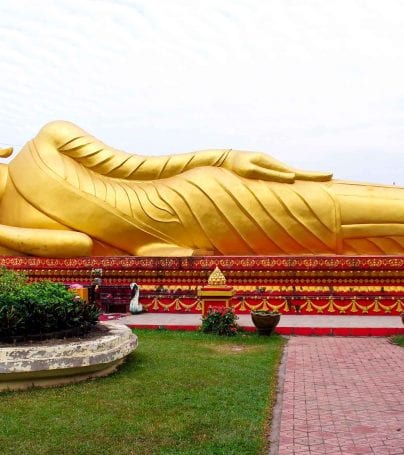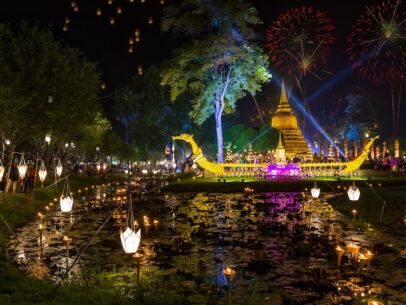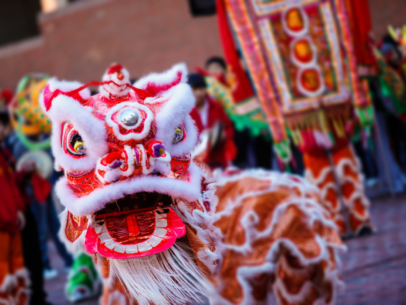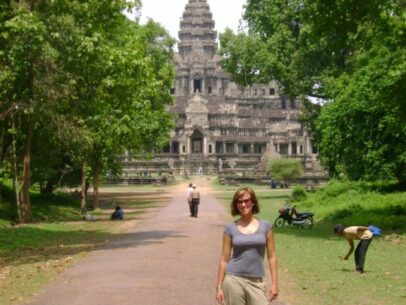Luang Prabang Adventure Tours
Luang Prabang, literally: “Royal Buddha Image (in the Dispelling Fear mudra),” is a city located in north central Laos, where the Nam Khan river meets the Mekong River about 425 kilometers (264 mi) north of Vientiane. It is the capital of Luang Prabang Province. The current population of the city is about 103,000. The city was formerly the capital of a kingdom of the same name. Until the communist takeover in 1975, it was the royal capital and seat of government of the Kingdom of Laos. The city is also notable as a UNESCO World Heritage Site. The main part of the city consists of four main roads located on a peninsula between the Nam Khan and Mekong rivers. The city is well known for its numerous Buddhist temples and monasteries. Every morning, hundreds of monks from the various monasteries walk through the streets collecting alms. One of the major landmarks in the city is a large steep hill on which sits Wat Chom Si. Muang Sua was the old name of Luang Prabang following its conquest in 698 A.D. by a Tai prince, Khun Lo. Khun Lo had been awarded the town by his father, Khun Borom, who is associated with the Lao legend of the creation of the world, which the Lao share with the Shan and other peoples of the region. Khun Lo established a dynasty whose fifteen rulers reigned over an independent Muang Sua for the better part of a century.
In the second half of the 8th century, Nan-chao intervened frequently in the affairs of the principalities of the middle Mekong Valley, resulting in the occupation of Muang Sua in 709. Nan-chao princes or administrators replaced the aristocracy of Tai overlords. Dates of the occupation are not known, but it probably ended well before the northward expansion of the Khmer empire under Indravarman I (r. 877-89) and extended as far as the territories of Sipsong Panna on the upper Mekong.
In the meantime, the Khmers founded an outpost at Xay Fong near Vientiane, and Champa expanded again in southern Laos, maintaining its presence on the banks of the Mekong until 1070. Chanthaphanit, the local ruler of Xay Fong, moved north to Muang Sua and was accepted peacefully as ruler after the departure of the Nan-chao administrators. Chanthaphanit and his son had long reigns, during which the town became known by the Tai name Xieng Dong Xieng Thong. The dynasty eventually became involved in the squabbles of a number of principalities. Khun Chuang, a warlike ruler who may have been a Kammu (alternate spellings include Khamu and Khmu) tribesman, extended his territory as a result of the warring of these principalities and ruled from 1128 to 1170. Khun Chuang, a single family ruled over a far-flung territory and reinstituted the Siamese administrative system of the 7th century. At some point, Theravada Buddhism was subsumed by Mahayana Buddhism.
Xieng Dong Xieng Thong experienced a brief period of Khmer suzerainty under Jayavarman VII from 1185 to 1191. By 1180 the Sipsong Panna had regained their independence from the Khmers, however, and in 1238 an internal uprising in the Khmer outpost of Sukhothai expelled the Khmer overlords. Xieng Dong Xieng Thong in 1353 became the capital of Lan Xang. The capital was moved in 1560 by King Setthathirath I to Vientiane, which remains the capital today.
In 1707, Lan Xang fell apart and Luang Prabang became the capital of the independent Luang Prabang kingdom. When France annexed Laos, the French recognized Luang Prabang as the royal residence of Laos. Eventually, the ruler of Luang Prabang became synonymous with the figurehead of the French Protectorate of Laos. When Laos achieved independence, the king of Luang Prabang, Sisavang Vong, became the head of state for the Kingdom of Laos.
During World War II the Japanese occupied the city although it remained under nominal Vichy French control. On March 9, 1945, independence was declared for Laos, and Luang Prabang was the capital. After the Japanese surrender, Colonel Hans Imfeld, commissioner of the French Republic, entered Luang Prabang on 25 August 1945 with a party of Franco-Laotian guerrillas and received assurances from the king that the protectorate was still in force.
Luang Prabang has both natural and historical sites. Among the natural tourism sites, there are the Kuang Si Falls and Pak Ou Caves. At the end of the main street of Luang Prabang is a night market where stalls sell shirts, bracelets, tea – suitable souvenirs. The Haw Kham Royal Palace Museum and the Wat Xieng Thong temple are among the most well known historical sites. Along with the magnificent wats a significant part of the old town’s appeal are the many French provincial style houses.
Customize Your Dream Adventure
We are here to help craft tailor-made adventures for individuals, couples, families, and groups of explorers.

